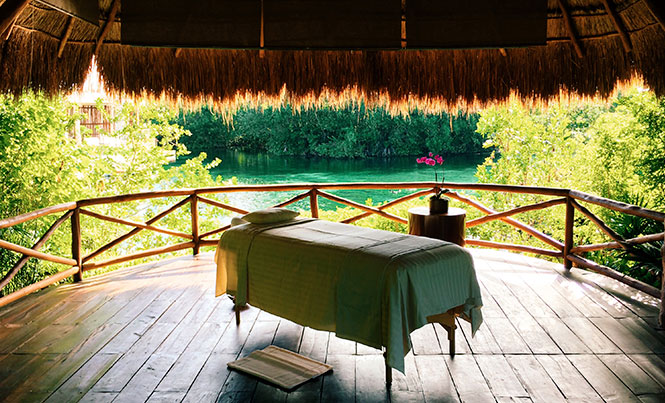Spas of the Riviera Maya
Discover the top local wellness facilities awarded by Spa & Wellness MexiCaribe magazine

Spa & Wellness MexiCaribe, the publication for Mexico, the Caribbean and Latin America specializing in spa and wellness industry and consumer information, recently announced the winners of the 2017 Best Spas Award. These awards highlight the best the region has to offer, increasing knowledge of the industry among tourism professionals, health and wellness experts, and spreading the benefits of spa.
You may not know that the Riviera Maya is home to not only some of the country’s and region’s best spas, but also some of the world’s best spas!

Here in the state of Quintana Roo, we boast two of the five Luxury Resort Spa winners.
- Nizuc Spa & Resort, Nizuc Spa by ESPA offers the exceptional quality of the UK ESPA brand right here in Mexico.
- Rosewood Mayakoba, Sense Spa, created an amazing journey with their Mayan Kuxtal Garden. The only Mexican property to receive the Forbes Travel Guide Five-Star Awards for both the hotel and spa.
If you are looking for a truly exceptional experience, either of these amazing facilities is sure to provide it.
Within the list of Best Spas, seven out of 20 winners are located here in the Riviera Maya.
- Banyan Tree Mayakoba, Banyan Tree Spa offers a taste of Asia with excellent Thai and Balinese massage techniques.
- Belmond Maroma Resort & Spa, Kinan Spa offers a connection with nature and a notorious ‘fertility pool’.
- Beloved Playa Mujeres is one of the few resorts where couples can enjoy extensive hydrotherapy facilities together.
- Fairmont Mayakoba, Willow Stream Spa prides itself on exceptional service from start to finish with high quality aromatherapy and well-executed spa experiences.
- Grand Luxxe at Vidanta Riviera Maya, Spatium boasts the only (or one of very few) Himalayan Salt Rooms in the region, great for respiratory ailments.
- Hyatt Ziva Cancún, Zen Spa offers spa and wellness seminars in their Alchemy Workshop Room in addition to custom spa journeys.
- Le Blanc Spa Resort, Blanc Spa is a great choice for an exceptional facial treatment, leaving you glowing and radiant.
Sara Jones
Spa, Wellness & Lifestyle Expert, Spa Consultant and Founder of Spa & Wellness MexiCaribe magazine







